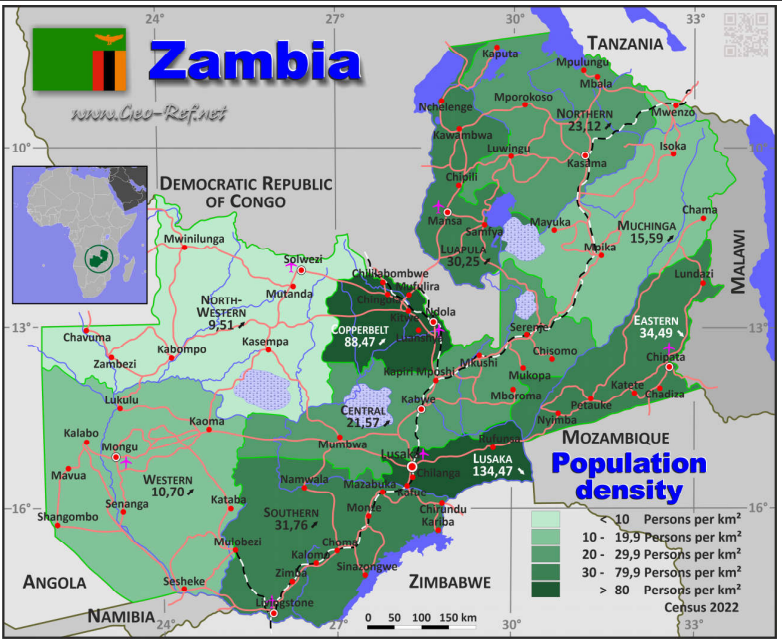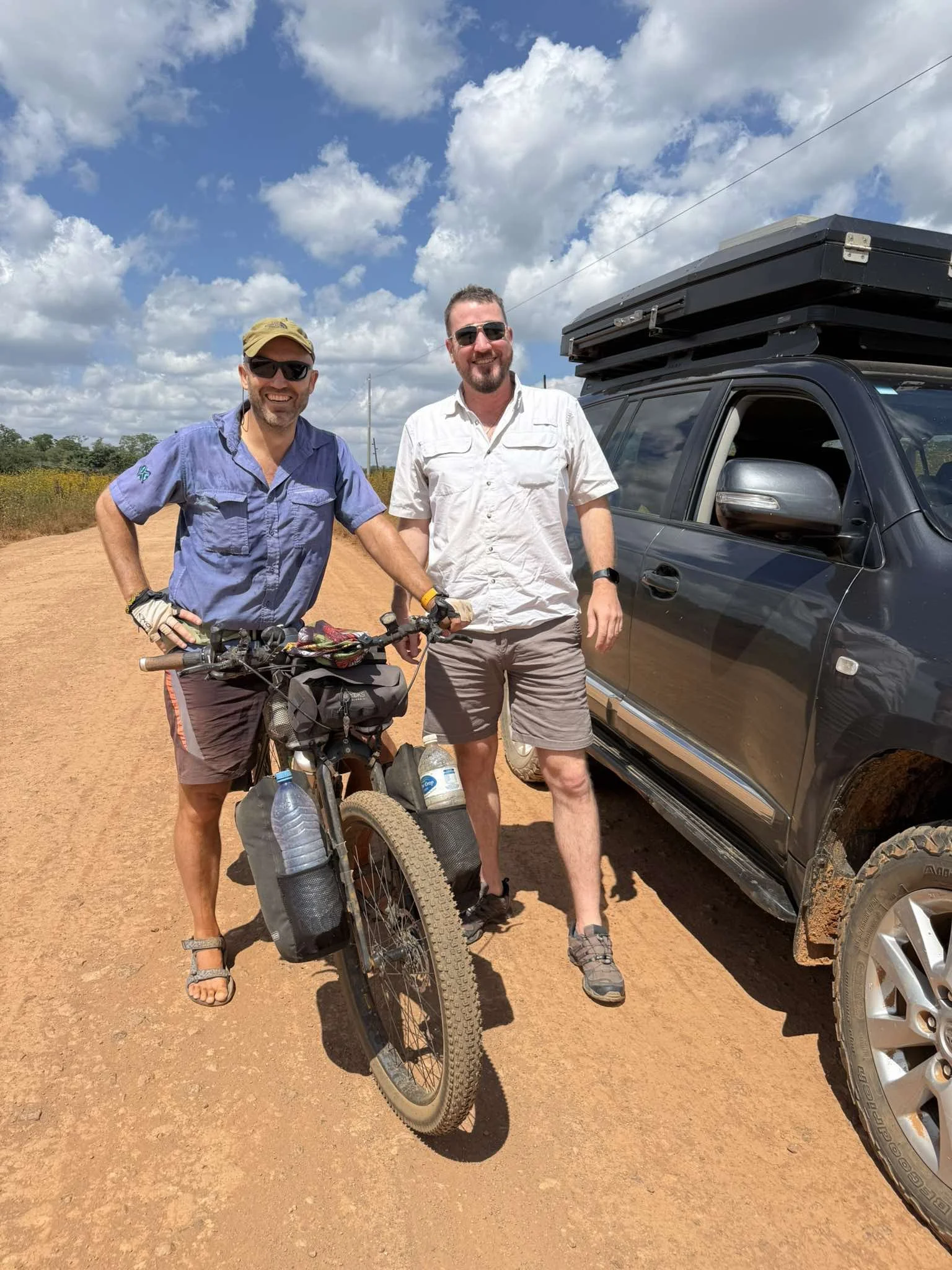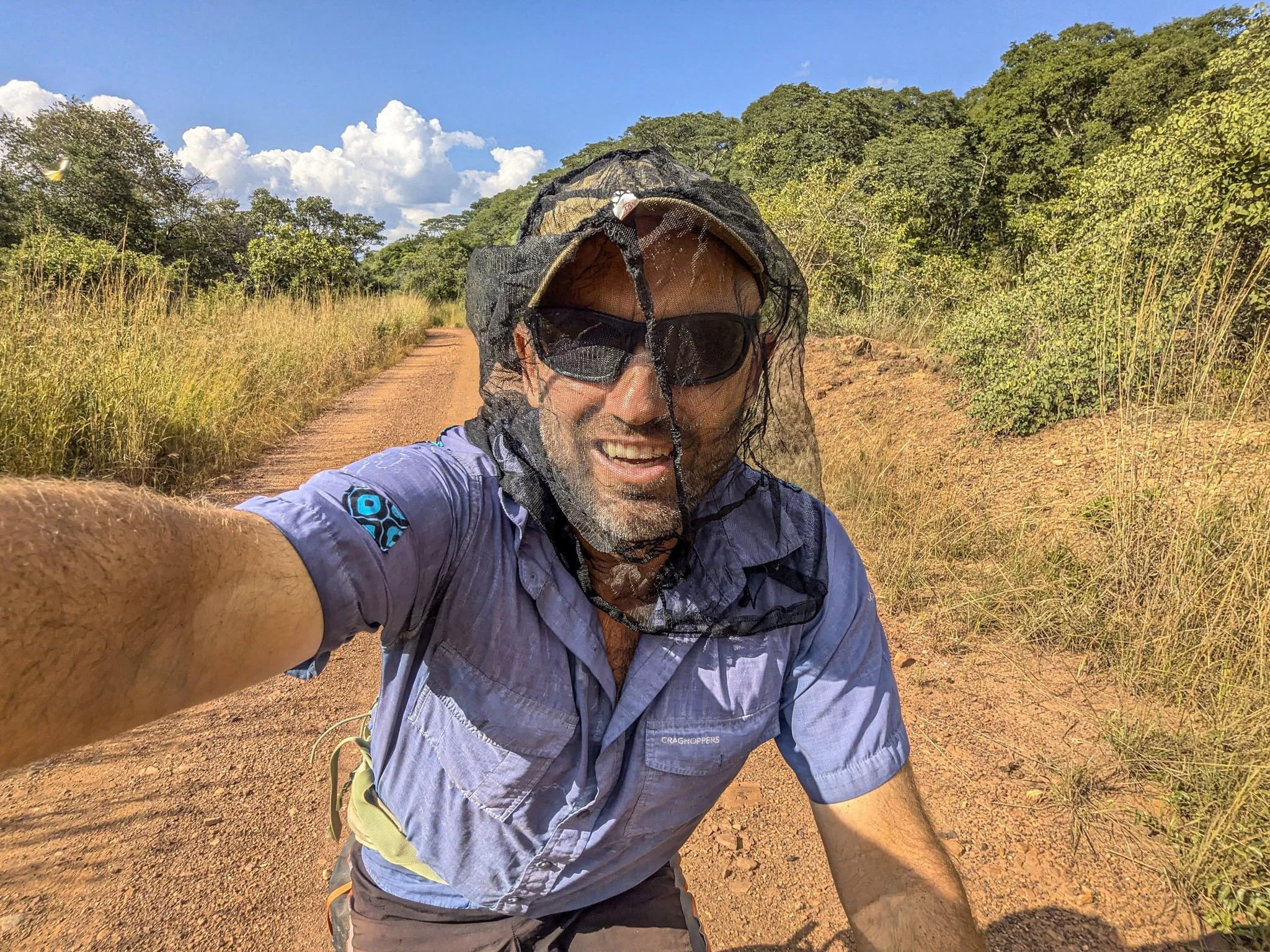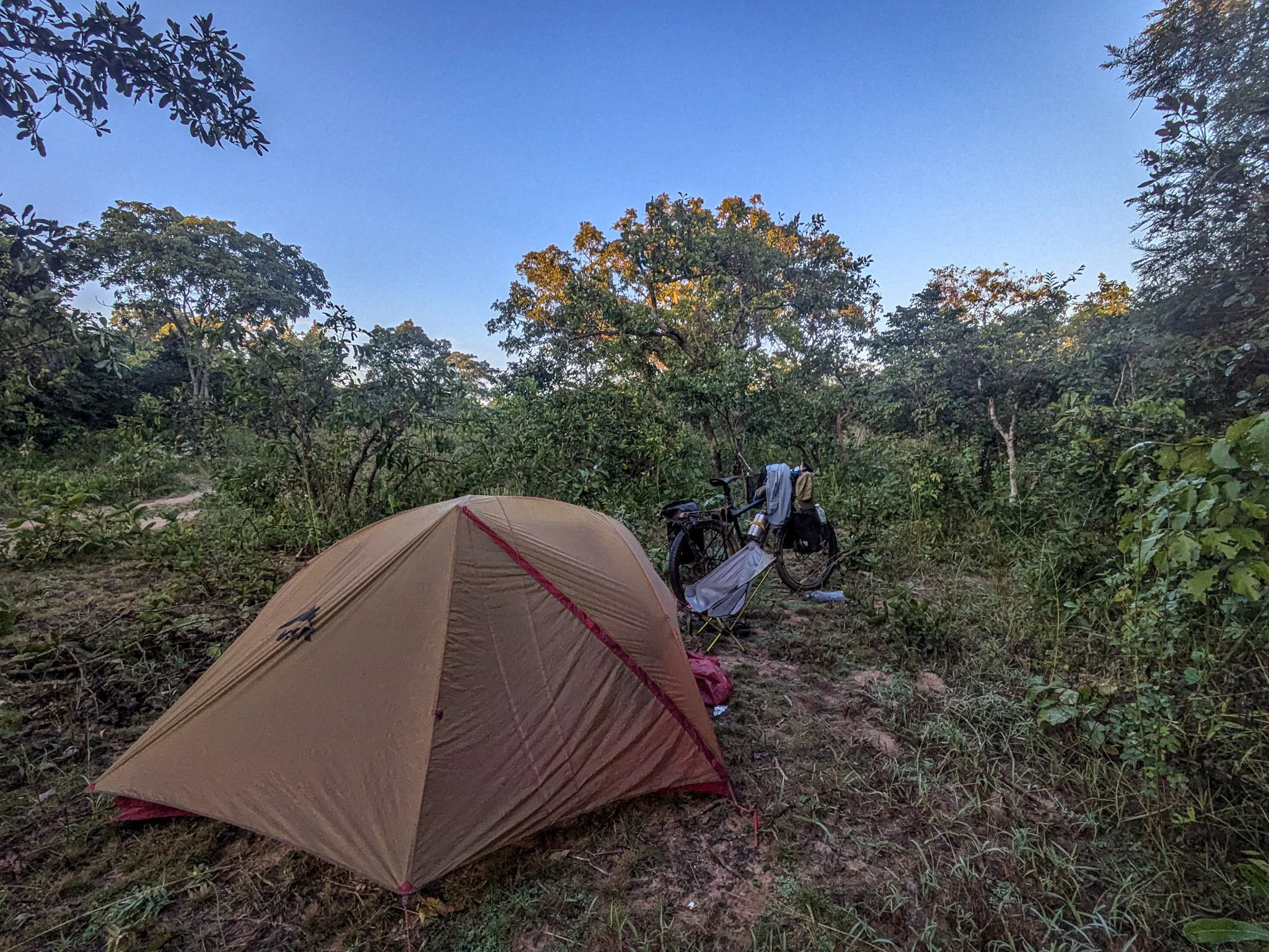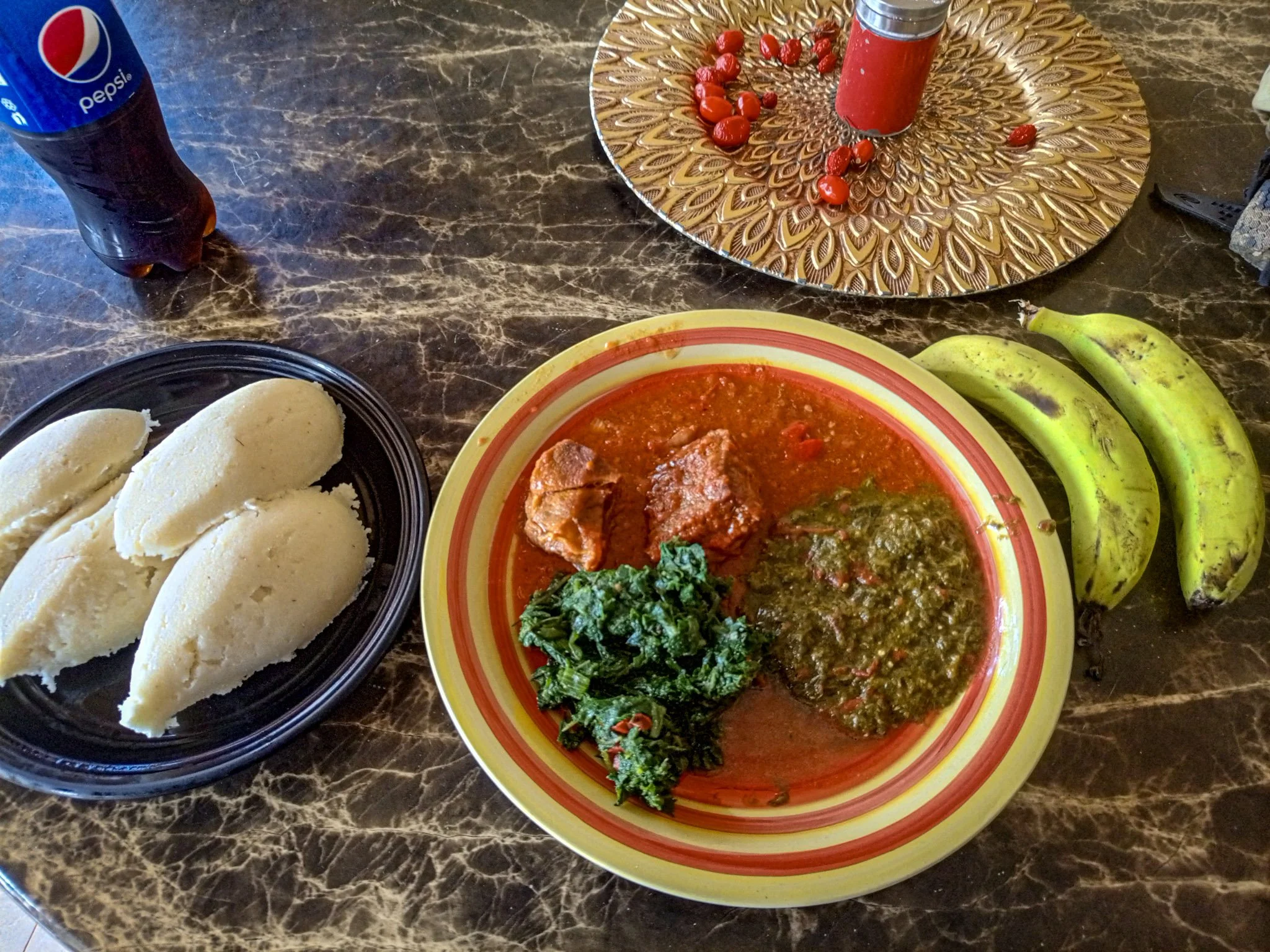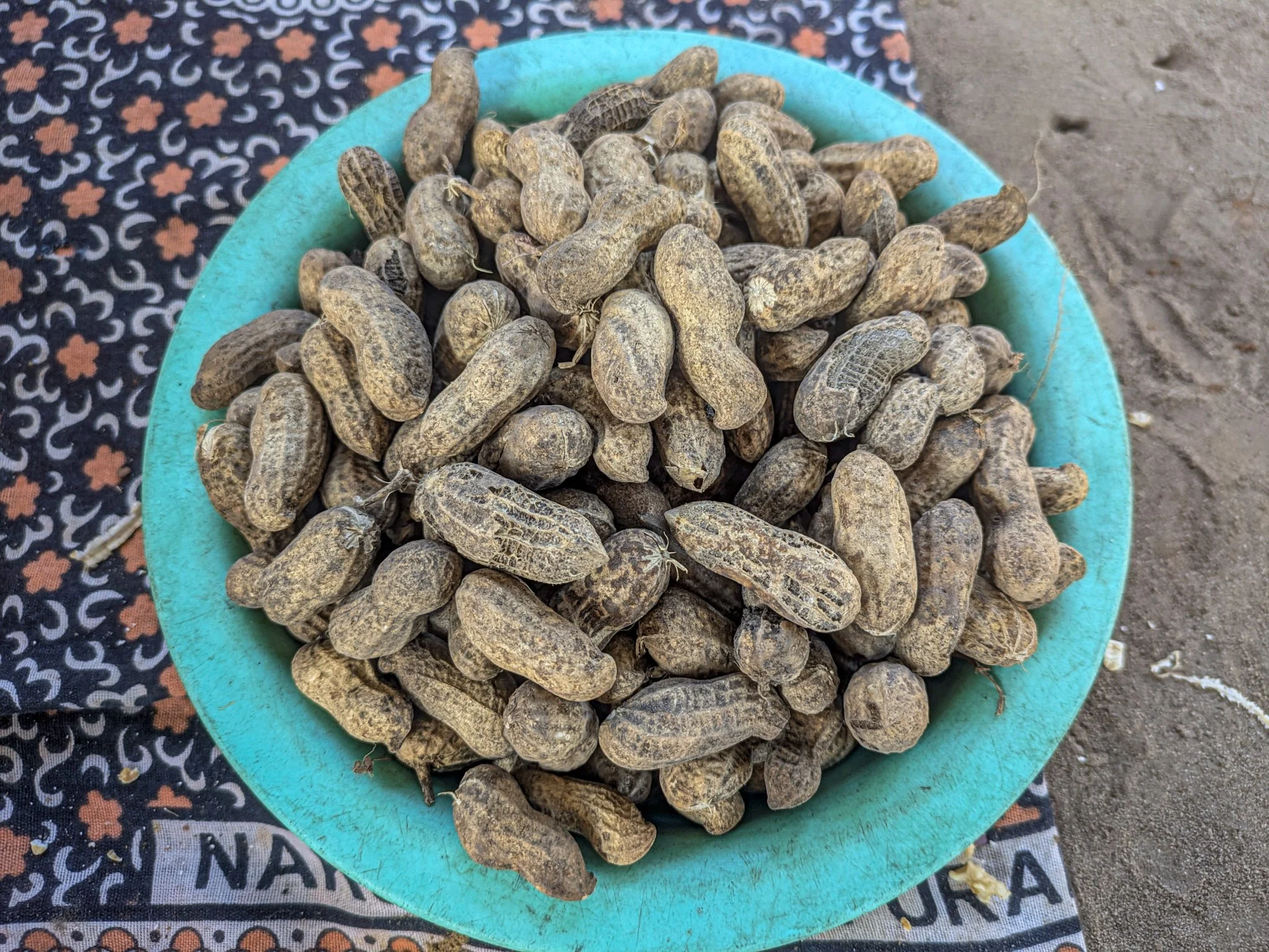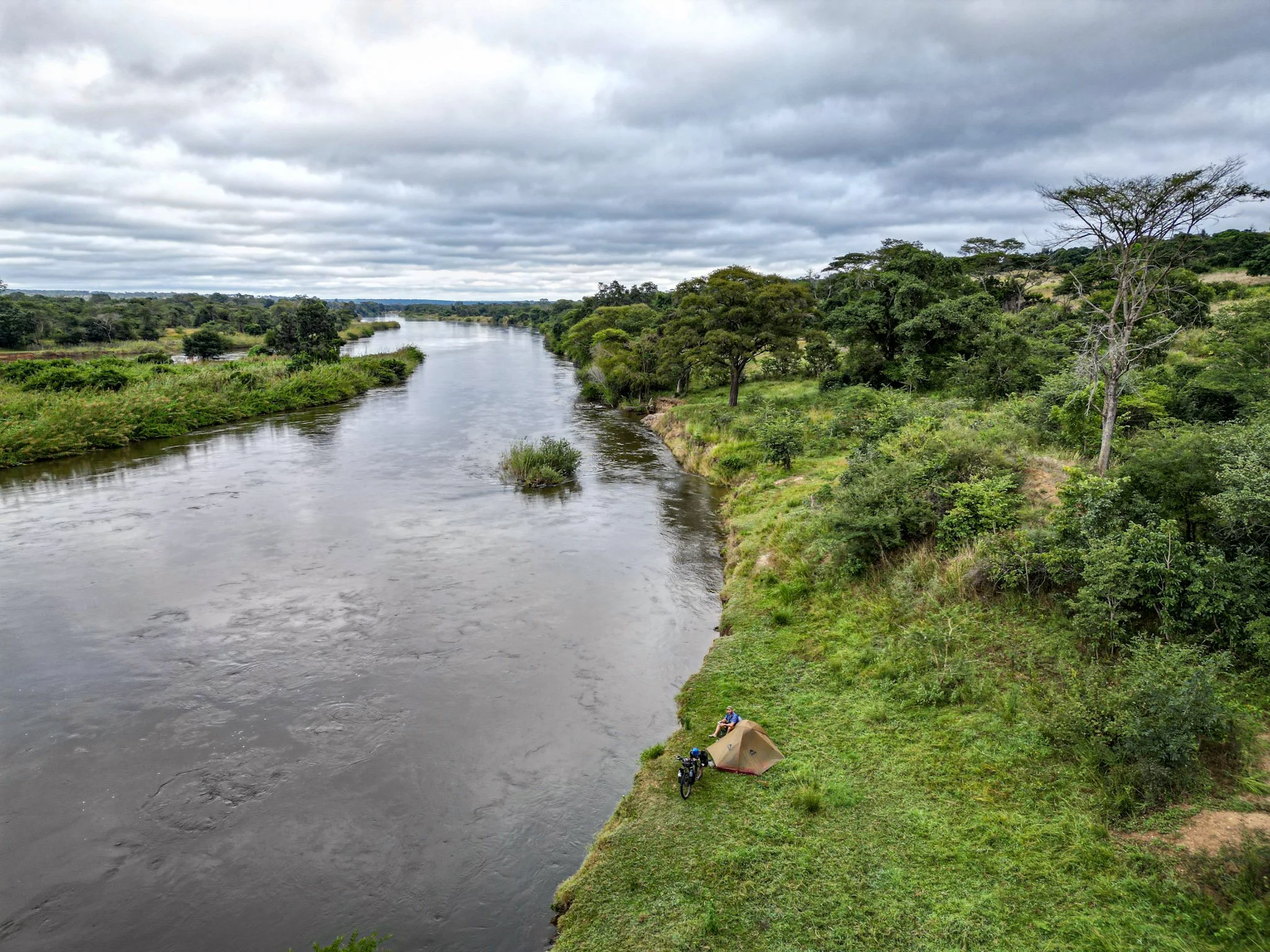Across Africa Part 7: Tsetse Trails West
Malaria symptoms were long gone when I left the small district town of Mumbwa. Ahead of me lay Zambia’s largest national park and the country’s least populated region - neither places to fall sick again.
Now that I recognised the symptomatic headache, which both times felt like dehydration and/or a hangover, I made sure I carried at least two rapid test kits, plus a course of coartem to treat the disease. Test kits and malaria medication are easily available in pharmacies in Zambia, as they are throughout much of sub-saharan Africa.
I also decided to start taking doxycycline, an antibiotic which is commonly used as a preventative to malaria. More on that in a following post.
This photos here cover the remaining few weeks (around 1000km) of what was an almost 3-month stay in Zambia.
Kafue National Park is Zambia’s largest. While tourist literature might describe it as one of the best places to see wild dogs, leopards, cheetahs and a wide variety of antelopes, it’s also home to a significant population of tsetse flies, as I would find out.
The north western region of Zambia has the country’s lowest population density, which is always a good sign when travelling by bicycle.
Small world. Once upon a time while cycling through the DRC, this guy, who was living there at the time and followed my journey, emailed me with an invite to stay. We never actually met until he stopped his car on this remote track in Zambia (14 years later) and recognised me.
Beau, from the US, was driving towards Kafue National Park with his family (he now lives in Zambia) and was kind enough to hand me a cold can of Dr Pepper and some water.
A few hours later I had crossed into the park. There are no limitations on cycling into the park, but anyone who has done it before is unlikely to do it again. The tsetse flies welcomed me even before I made it to the park gate. At this point there were just a few.
Unlike mosquitoes, tsetse flies fortunately disappear after sunset. I pitched my tent a short distance from the first of two rivers I needed to cross by chain ferry. A peaceful night, but with plenty of hippos grunting in the Kafue River overnight, and a lot of trampled vegetation near the tent, not the best of places to camp.
First water filter fill up. I realised there would be no villages ahead of me the next morning with an opportunity to fill up with water, so I filtered 2 litres from the River Kafue.
‘Do you see the lion’? said the boatman pointing back across the river early the next morning as the chain ferry chugged across. I zoomed in with my phone camera and watched as the solitary beast moved slowly across the track, a few hundred metres from where I pitched my tent! And I was about to cycle another 85km through the park on a rough track to the next river, demarcating the end of the national park.
Layered up but still being bitten. Tsetse flies are quite capable to bite through 2 layers of clothing. They’re also attracted to darker colours, especially blue, which I sort of knew. I wasn’t doing myself any favours. It made cycling through the park a miserable experience. With about 30km to go until the river and the end of the park, a pick-up passed me and the driver stopped to offer a lift. In such situations I don’t think twice about accepting an offer.
Aside from the solitary lion, remarkable if somewhat scary in itself, I had seen a lone elephant crossing the track in front of me the day before. For the rest of my time in Kafue National Park it was head down and a battle to swat the tsetse flies.
While these flies can potentially carry sleeping sickness, the infection rate is very low, so inflection was much less of a concern than just being bitten iself.
Across the second river and out of the park. The flies were no more. There is little you can do to avoid tsetse flies in places like Kafue National Park. Wearing lighter coloured clothes reportedly helps, as does remaining stationary (they are attracted to moving objects) and just staying in a vehicle with the windows closed.
The video reel below captures that experience of cycling through Kafue National Park.
And relax. While the wooded landscape here was very similar to inside the park, there were no tsetse flies to worry about the next night.
Around 70% of Zambia’s land area is covered in miombo woodland like this. Deforestation for charcoal production and the expansion of mines in the country mean that percentage is decreasing. I could have easily travelled through Zambia and used a hammock more easily than a tent on a number of nights I camped.
Miombo woodland across Africa. Between 2006-2021 this area has decreased from 2.7 million km² to 1.9 million km².
Outside of Kafue National Park and riding north.
It was late April, the start of Zambia’s cooler and drier season.
Eating nshima as per usual when I find cooked food in Zambia. Alongside a plate of beef stew, pumpkin and hibiscus leaves ( former bright green). Simple, nutritious, delicious.
Open-air church to the rescue. 30 minutes prior to taking this photo it was lashing down with rain. I sought shelter under the corrugated roof, realising as the ground became saturated around me that it would be as good a place as any to set up camp. While my tent was hidden from the nearby road, I expected someone might find or see me as homes were nearby.
Which of course they did, bringing me a bowl of fresh groundnuts. I found Zambians amongst the friendliest and most welcoming of people in Africa. As English is widely spoken, even in rural areas, making conversation was rarely an issue.
Groundnuts at this time of year are plentiful and easy to buy anywhere.
Another magical camp the following day. I’d seen the River Kabompo (a major tributary of the River Zambezi) on the map and hoped I could find a way to the river bank to camp.
Sunrise the next morning. Camping next to rivers is always a big bonus.
Far too fast flowing for a swim, but one of the top campsites in Zambia.
Like most countries in Africa, Zambia has a youthful population. Over 75% of people are under 30 years old. Small shops, like the one pictured, are usually a focal point in places. If there’s shade, somewhere to sit down, no sight of a village drunk, nor a speaker system wired up to a car battery playing really loud music (there wasn’t here) it makes stopping for a soft drink much more enjoyable.
Riding further west and my last camp in Zambia. With the population density at its lowest here, finding places to camp should have been easier, but the miombo woodland and high grasses often made me wish I had a hammock.
While the population density is low, the area is not protected, so the likelihood of seeing large wild animals is rare too. I was more concerned with smaller creatures in the high grass.
Such as snakes. Fortunately this small twig snake I saw the following day was without the camouflage that would usually make it very hard to see in its natural habitat.
Check-in. I usually have a pretty good idea what accommodation will cost when I see the reception. This lodge in the town of Zambezi gave the appearance of a place costing more than the lower budget places I would usually stay.
So I was happily surprised when I found out the price of a standard room with functioning wifi was little more than £10 per night. Such things make staying an extra day or two an easy decision to make.
As does a pool and view of the Zambezi below.
Despite the malaria I really enjoyed cycling through Zambia. No dramatic landscapes, but some fantastic quiet tracks through remote woodlands, beautiful waterfalls and places to camp. And some of the friendliest people on the continent.
A few kilometres before crossing the border to Angola I stayed with Johan, a South African missionary who has lived in Zambia for the last few decades.
Goodbye Zambia. I could tell from the track taking me to the border with Angola that this was not a well-used border crossing. Johan, who had driven this way into Angola a number of times, told me enough to know that it was going to be quite an adventure once I crossed the border.
If you enjoyed this post, and any other on the website, please consider supporting me by clicking on the link below. It’s a great motivation to continue creating and sharing content. Thanks



